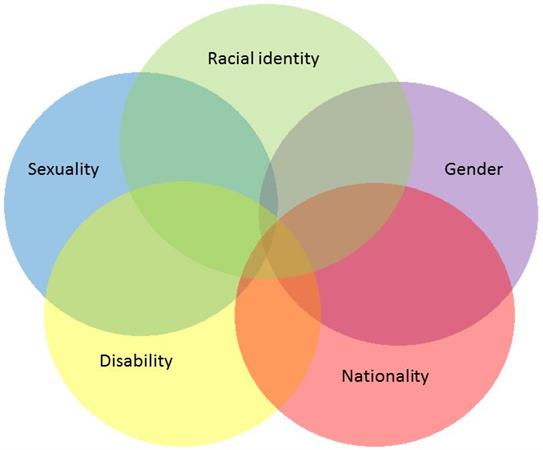Blog Post #5 - Intersectionality Videos (Connections)
The videos about intersectionality defined it as multiple identities that intersect. The oppressions and privileges that overlap to make up an individual. I noticed that this related to Alan Johnson’s reading about privilege and power. Johnson talks about how everyone is involved in social justice issues, and our positions in that involvement depend on our privilege. I think these two, Johnson and the videos, go hand in hand. While the videos work to define and help people understand what intersectionality is, Johnson goes the next step and talks about how we can use intersectionality to understand social justice issues.
Kimberlé Crenshaw, the speaker in the TED Talk, says that social dynamics come together in individuals to create unique challenges and experiences. She also says that the more specific a problem is, the less likely it is to be seen and taken seriously. This is because people don’t take intersectionality into account. Johnson does consider intersectionality and encourages the reader to do the same. Johnson uses himself as an example and says that “that combination of social characteristics does not simply limit me, for each also provides a bridge from my own experience to some portion of almost every reader’s life.” He wants people to understand that we are all made up of overlapping characteristics and we can use our different experiences to better understand those characteristics and the challenges they come with.
The videos about intersectionality also reminded me of SCWAAMP. SCWAAMP is the acronym used to describe a person's privilege, and it showcases all the aspects that are valued in our society. When discussing intersectionality, the wheel of power often comes up. It helps us visually see what characteristics we have, and where they overlap. This wheel visual can also be used with SCWAAMP. If you break down each letter of SCWAAMP, you can see how close or far you are to power. For example the “A” stands for able-bodied, on a wheel this category would start with able-bodied as the closest to power, and the more disabled a person is, the further away from power they would be.
To connect everything together, I found an article about intersectionality and how it connects to women’s rights. One thing I really liked about the article was that it includes this version of the power wheel which shows that characteristics overlap. I think this visual is another great way to represent people’s intersecting identities.
Intersectionality 101: what is it and why is it important?


I like how you connected this to Johnson and SCWAAMP. I focused on a silent dialogue and culturally responsive pedagogy myself, so it was interesting reading your varying connections.
ReplyDelete